Swiss Meringue Buttercream is silky smooth, versatile, and perfect for people who find American buttercream to be too sweet. This recipe takes a bit of effort and patience, but it’s so worth it! Recipe includes a how-to video.
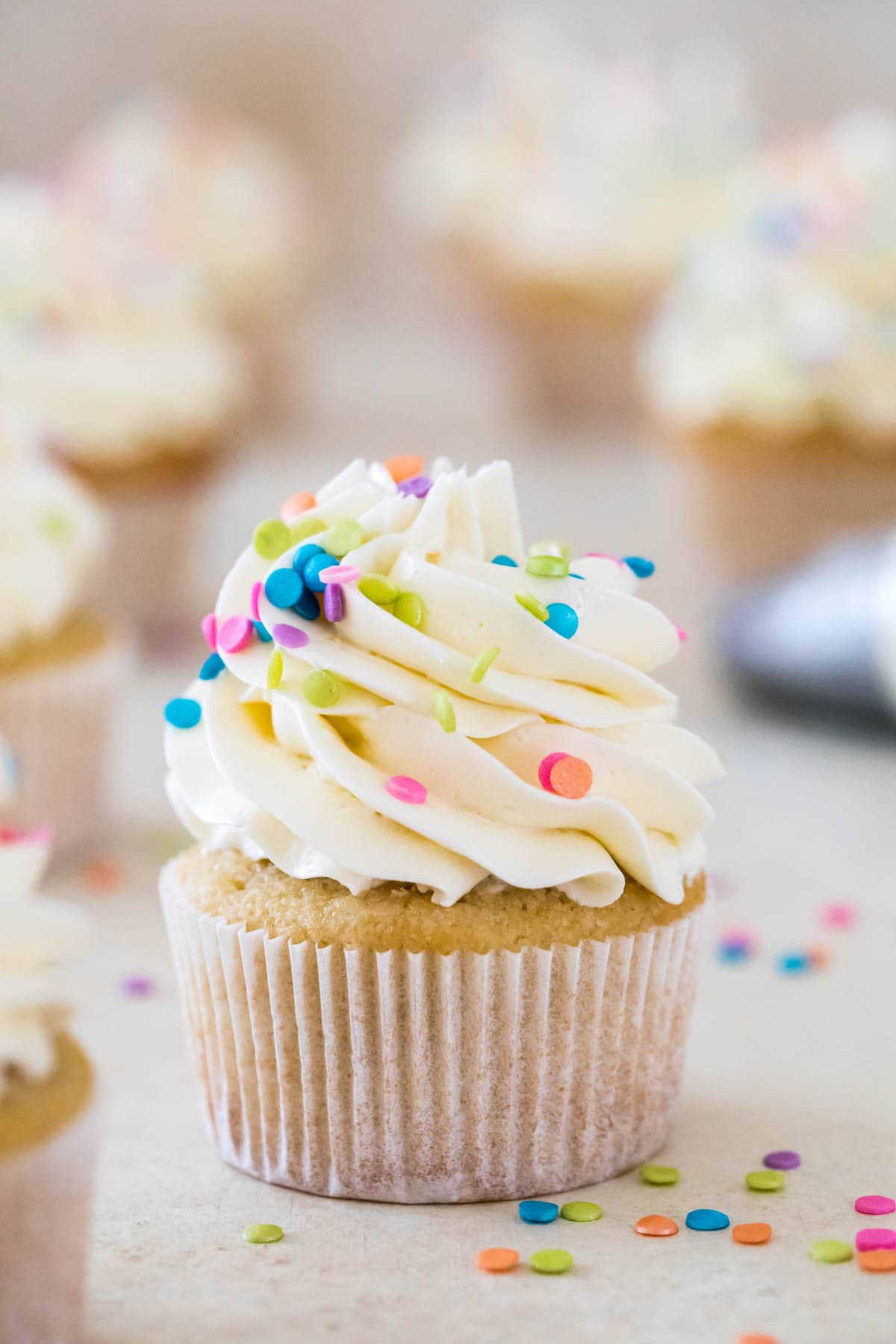
A Perfectly Sweet Buttercream
If you’ve ever been the kind of person to scrape the frosting off your cake because it’s just too sweet, today’s recipe is for you.
Swiss meringue buttercream is one of the most common frosting recipes used by professional bakers, yet most home bakers haven’t heard of it. Instead, they use American buttercream frosting, which is thicker and typically very sweet. Swiss meringue buttercream, on the other hand, is light, buttery, and perfectly sweetened.
This frosting gets its texture from a meringue base made of granulated (not powdered!) sugar and egg whites. It’s not hard to make, but if you’ve mostly made your frostings away from the stovetop in the past (as I did for decades), this recipe might seem a bit more complicated than what you’re used to. Today we’ll walk together through all the steps in detail so you can make your own flawless batch of buttercream.
What you’ll love about it:
- Velvety smooth & creamy (and stays that way–it doesn’t crust!)
- Has a light, silky & perfectly buttery mouthfeel
- Perfect for piping, decorating, and using under fondant
- Versatile; I love to pair it with chocolate cupcakes or vanilla cake, but it would be great with any flavor!
What You Need
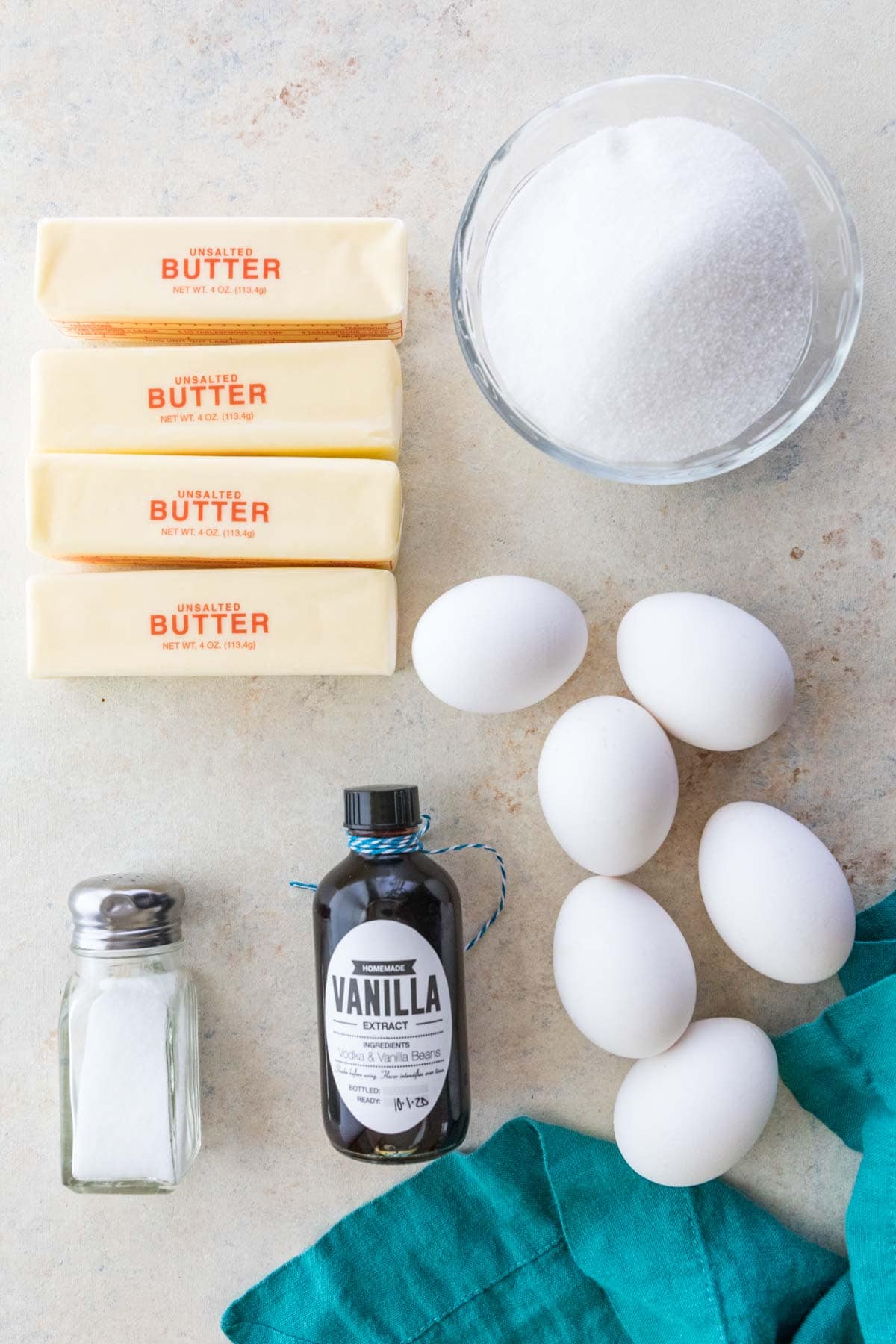
Similar to my German buttercream, this recipe starts on the stovetop and ends with lots of butter (but I personally believe the Swiss version is less fussy and easier to get just right!). Here are the key ingredients you’ll need:
- Egg whites. For best results, use room temperature egg whites; I do not recommend using the kind you can find in a carton, as they don’t consistently whip properly (some of you who try will have success, others won’t!). Make sure you don’t have any yolk in your whites! We will be cooking the egg whites, so you won’t be consuming raw eggs in this frosting.
- Butter. It’s important that your butter is softened, but not so soft that it’s melting out of your butter wrapper or even greasy. I usually set mine out of the fridge about an hour before I begin making my buttercream.
- Vanilla. I use vanilla extract today, but you can switch up the extract for a different flavor. Note that some extracts, like almond or mint, will be more potent, so you may not need as much as I have listed here.
- Granulated sugar. Unlike most frostings, this recipe uses granulated sugar instead of powdered sugar. The sugar will need to fully dissolve before you begin whipping your meringue, or it won’t turn out properly.
Remember, this is just an overview of the ingredients I used and why. For the full recipe please scroll down to the bottom of the post!
How to Make Swiss Meringue Buttercream
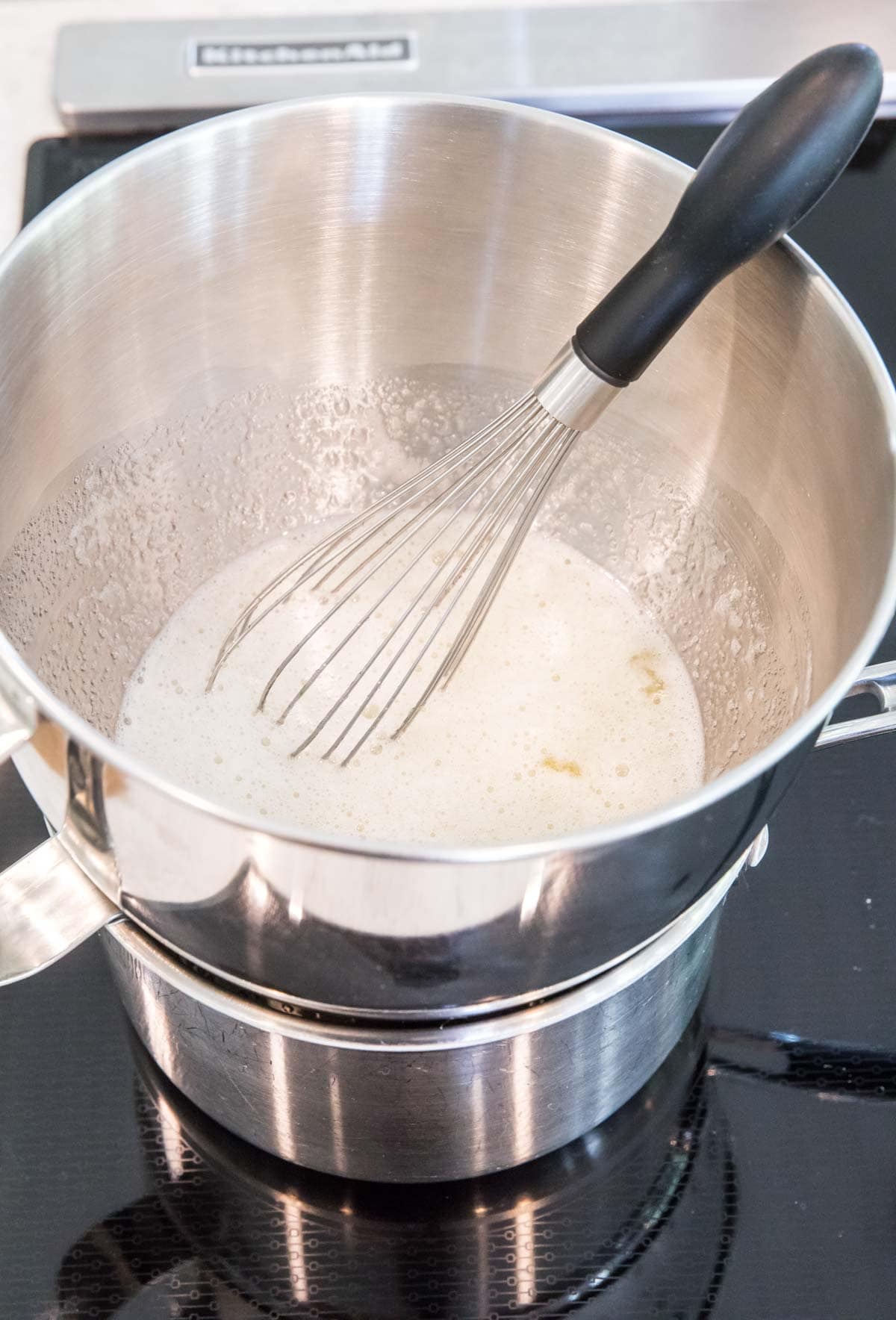
I strongly recommend using a stand mixer for this recipe. Making this frosting by hand or even with an electric mixer would be a workout. I can’t even imagine how long it would take!
- Combine egg whites, sugar, and salt in a clean, dry, and grease-free mixing bowl.
- Place your bowl over a double boiler and whisk constantly until the sugar dissolves and the mixture reaches 160F (this ensures your eggs are cooked to a safe-to-consume temperature).
- Place the bowl on your mixer and beat on medium-high speed until you reach stiff peaks.
- Let the bowl cool down completely, then switch to a paddle attachment and beat in the butter one tablespoon at a time.
- Scrape down the sides and bottom of the bowl and continue beating on medium-high until the frosting is smooth and thick.
- Stir in any flavorings or coloring, then pipe or spread on your cake as desired!
SAM’S TIP: To test if your sugar has full dissolved, rub a small bit between your fingers before proceeding to the next step. If you can feel any grit or grain at all, your sugar is not fully dissolved and you’ll have a gritty buttercream–so keep whisking until all the sugar is dissolved.
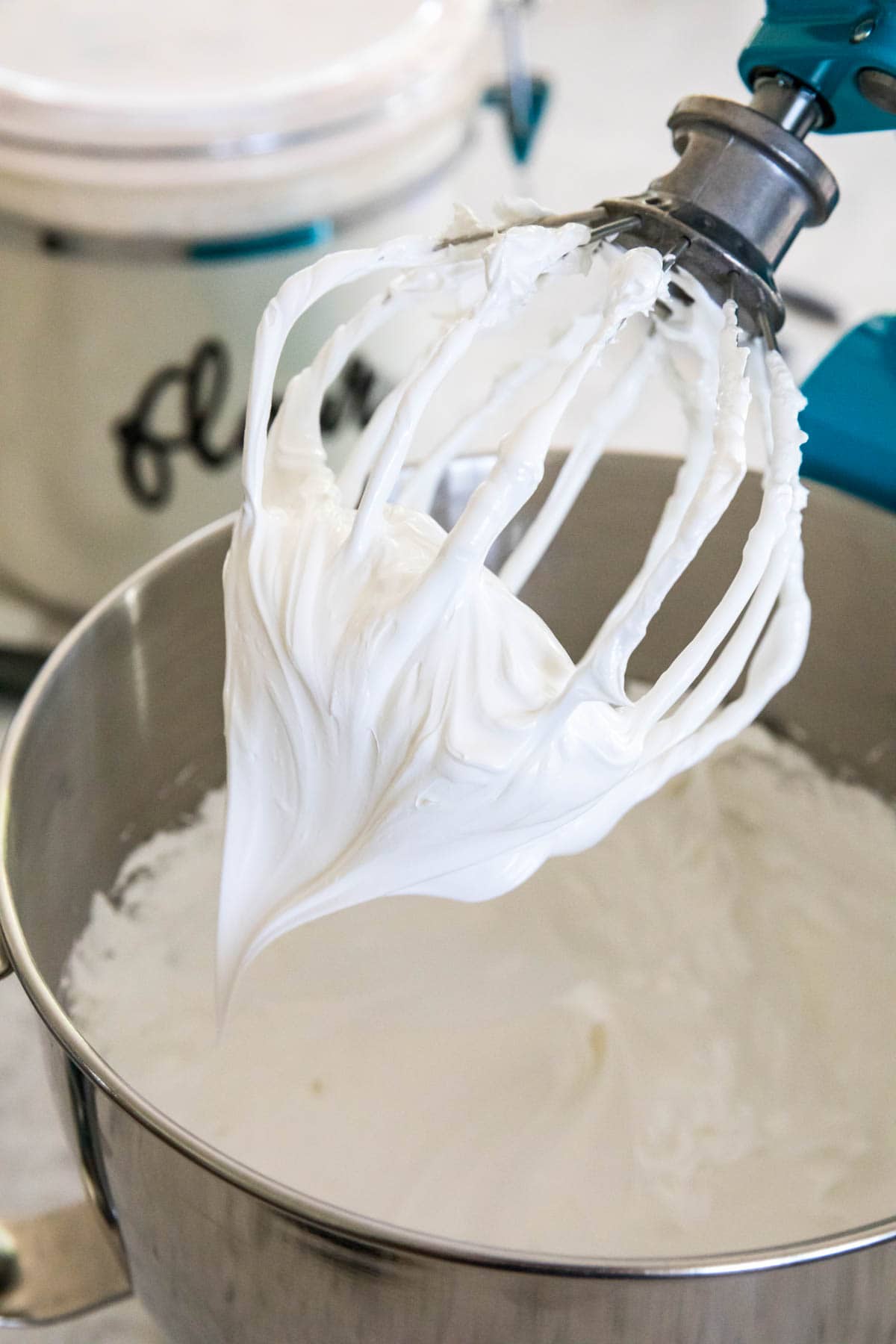
SAM’S TIP: “Stiff peaks” means that if you lift the whisk straight out of your meringue, the peak that forms holds its shape and doesn’t melt back into itself or fold over. This will take at least ten minutes or so. If you’d like a visual of this, check out the photo below or watch the video in the recipe card.
Help: My Buttercream Curdled!
Sometimes during the process of adding the butter, your buttercream might break down and take on a curdled appearance. Don’t panic! So long as you’ve followed all of the previous steps correctly, everything is going to be just fine. Just keep mixing, just keep mixing, and by the time all of your butter is added, the buttercream should come back together. If it doesn’t, transfer your bowl to the refrigerator for 10 minutes and then try mixing again. Serious Eats has a great guide on rescuing Swiss Meringue Buttercream if you are convinced you’ve ruined it.
SAM’S TIP: Once the meringue reaches stiff peaks, I like to give my mixer a break while the bowl cools completely (some people keep mixing until it cools, but I don’t want to wear out my mixer!). At this point I also like to switch over to my paddle attachment for a smoother whip. Don’t start adding your butter any further until your bowl is completely cool and not even a tiny bit warm to the touch!
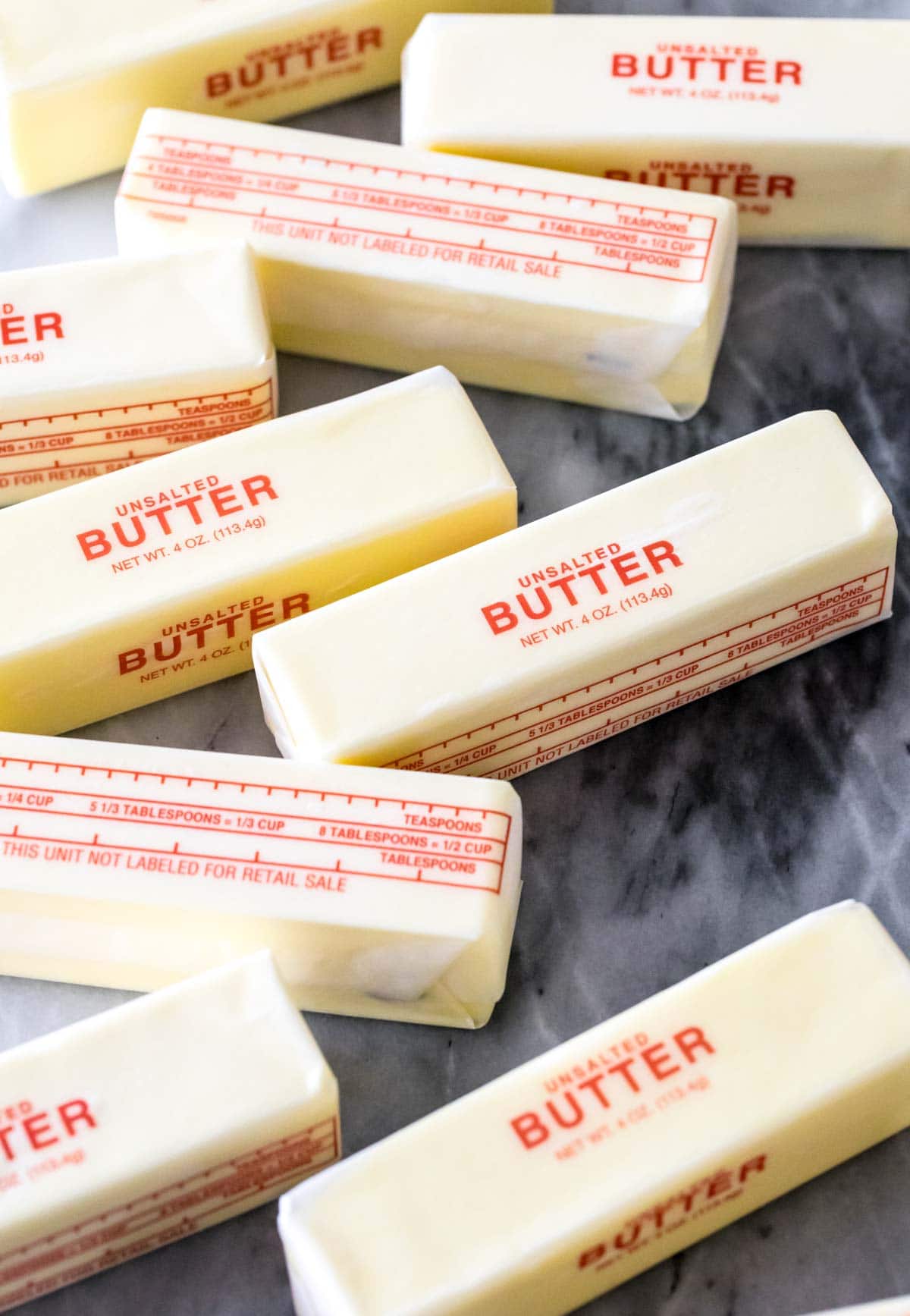
Frequently Asked Questions
If you’re storing this frosting, I recommend placing it in the refrigerator in an airtight container. A cake or cupcake frosted with this icing can be left out at room temperature (preferably in an airtight container!) for up to 2-3 days; beyond that, I recommend refrigerating.
Unfortunately, this frosting does not fare well in the heat. While the meringue does help to add some structure to the frosting, all of that butter is going to want to do what butter does in the heat: melt! While you can keep this frosting at room temperature and it will hold its shape wonderfully, it will start to melt or become very soft in hotter temperatures or if served outside on a warm day.
American buttercream is very sweet (almost too sweet for me, even!) and is made primarily of butter and powdered sugar. Swiss meringue buttercream is less sweet and is made primarily of granulated sugar, egg whites, and butter. Unlike American buttercream, Swiss doesn’t crust or harden and (as you’ve seen above) the technique for making Swiss meringue is quite different.
Yes! I recommend gel food coloring for best results, but any kind should work fine. Simply stir it in at the end until you have the desired color.
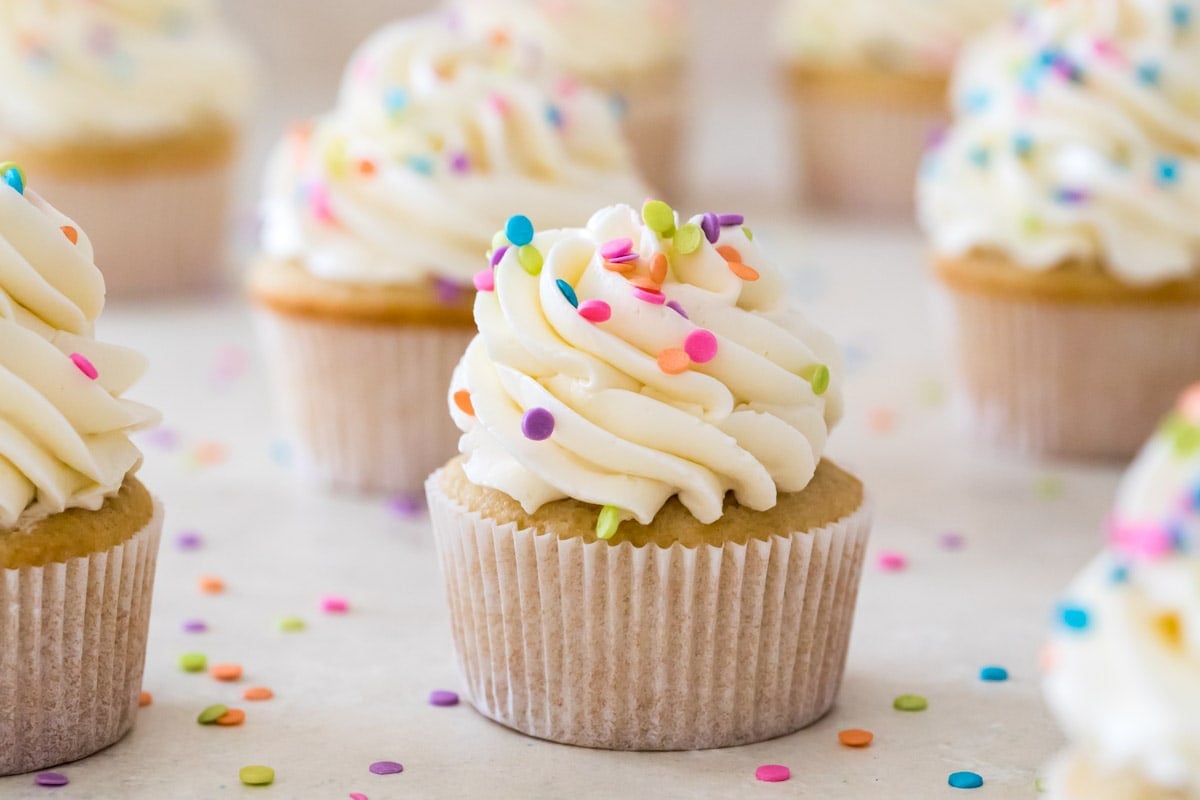
Enjoy!
Let’s bake together! I’ll be walking you through all the steps in my written recipe and video below! If you try this recipe, be sure to tag me on Instagram, and you can also find me on YouTube and Facebook

Swiss Meringue Buttercream
Ingredients
- 6 large (210 g) egg whites¹ make sure there is not even so much as a tiny bit of yolk mixed in with the egg whites or they won’t whip properly. (7.5 oz/210ml)²
- 1 ¾ cups (350 g) granulated sugar
- ¼ scant teaspoon salt just ever so slightly less than ¼ teaspoon
- 2 cups (455 g) unsalted butter cut into Tablespoon-sized pieces. Butter should be room temperature but not melt-y/oily, still solid enough to cut, but softened
- 1 ½ teaspoons vanilla extract
Recommended Equipment
Instructions
- You will need a double boiler or makeshift double boiler for this recipe. I use my KitchenAid stand mixer and a medium-sized saucepan that the bowl fits snugly into without touching the bottom of the pot.
- In clean, dry mixer bowl, combine egg whites, sugar, and salt and whisk until combined.6 large (210 g) egg whites¹, 1 ¾ cups (350 g) granulated sugar, ¼ scant teaspoon salt
- Heat about 1 ½ inches of water over medium-low heat in a medium-sized saucepan and bring to a simmer.
- Rest the bowl of your mixer in the pot over the simmering water (should not be touching the water).
- Whisk egg white/sugar/salt mixture constantly until the sugar is dissolved and mixture is no longer grainy (if you rub a small bit between your fingers it should feel smooth and not at all gritty) and the mixture reaches 160F (70C). This will take several minutes.
- Remove mixing bowl from heat and dry the bottom of your bowl. Fit bowl into your stand mixer.
- Using a whisk attachment, beat the egg whites on medium/medium-high speed until meringue is thick and glossy and you have achieved stiff peaks (see photo in post or see video for visual). This will take about 10 minutes or so.
- Once you have achieved stiff peaks, stop beating and allow bowl to cool down completely. The bowl must no longer be warm to the touch before proceeding.
- Once bowl is no longer warm to the touch (make sure you are feeling near the bottom of the bowl), switch out whisk attachment for paddle attachment. Turn mixer to medium speed and add butter one Tablespoon at a time. Don’t add the next tablespoon of butter until the previous one is incorporated into the meringue. If you notice that your buttercream starts to break down or look curdled, just keep mixing and it will come together. If it still doesn’t come together (it could take some time), place the mixer bowl in the fridge for about 10 minutes and then try mixing again.2 cups (455 g) unsalted butter
- Once all butter has been beaten into the meringue, scrape down the sides of the bowl and stir again. Beat on medium/high until smooth and thick.
- Stir in vanilla extract or other flavoring and any food coloring, if using.1 ½ teaspoons vanilla extract
- Spread or pipe over cupcakes or cake or use under fondant! I used an Ateco 848 for the cupcakes shown in this post.
Notes
¹Egg Whites
I do not recommend using pasteurized egg whites (the kind that you buy from the store in a carton) for this recipe.²Measuring Cup
If using a liquid measuring cup, you would fill to directly between the ¾ and 1 cup lineMaking in Advance/Storing
Swiss Meringue Buttercream may be made several days in advance of using it. Store refrigerated in an airtight container and then allow frosting to come to room temperature and stir well before using. If the buttercream seems to have lost some of its volume/lightness, use an electric mixer to whip it until it returns to its original texture.Here are a few recipes to use up your leftover egg yolks!
Nutrition
Nutritional information is based on third-party calculations and should be considered an estimate only. Actual nutritional content will vary based upon brands used, measuring methods, cooking method, portion sizes, and more.

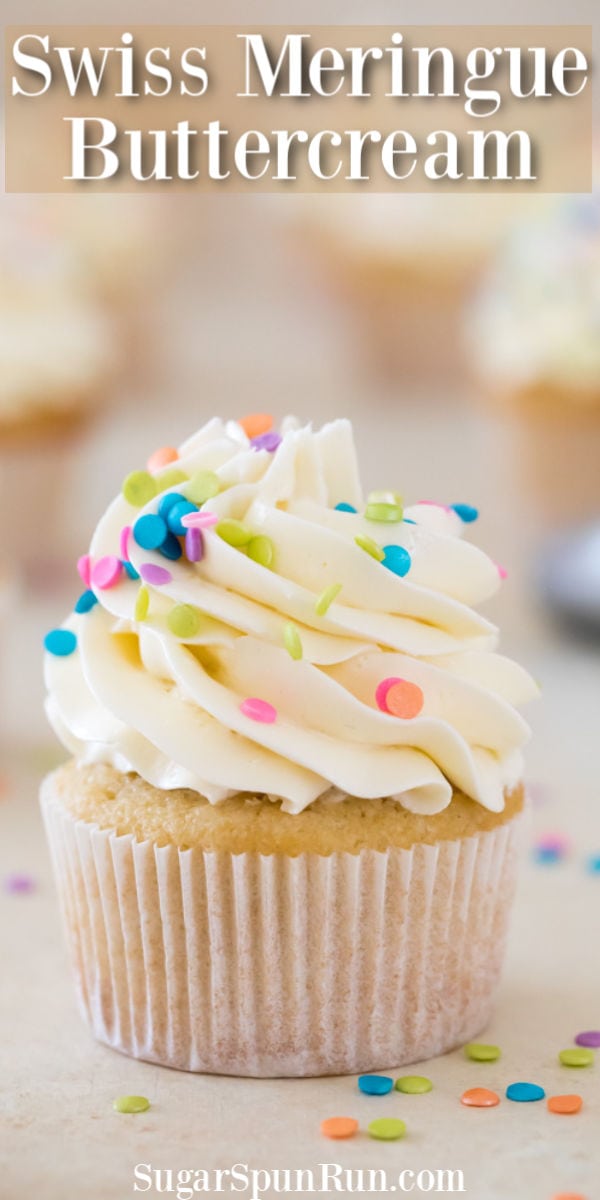
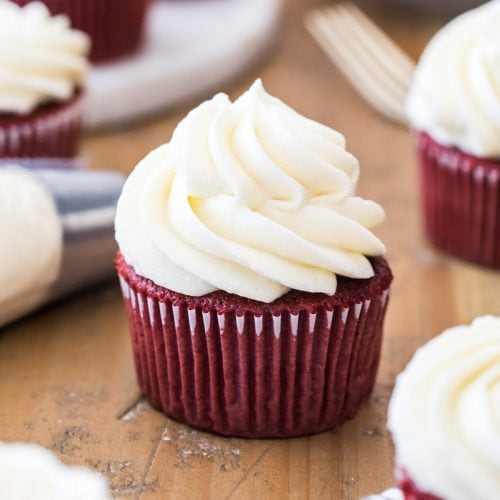
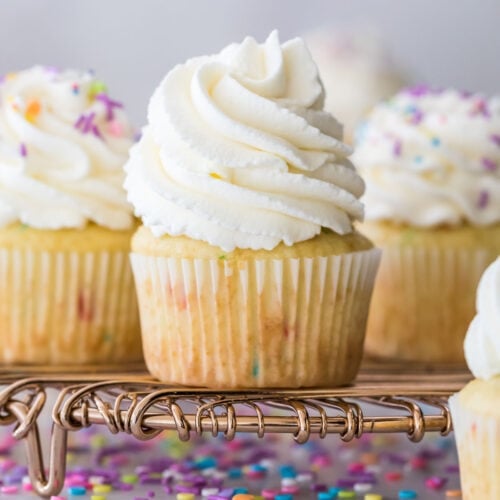
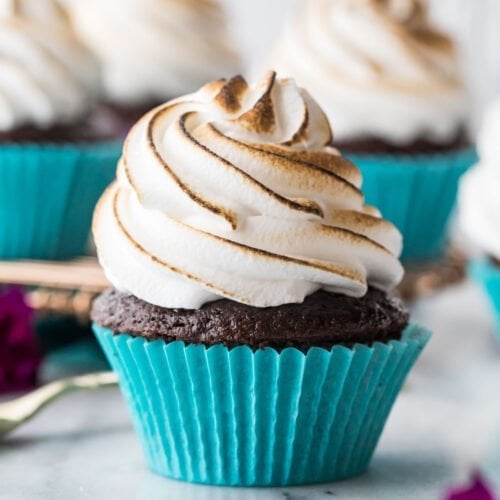
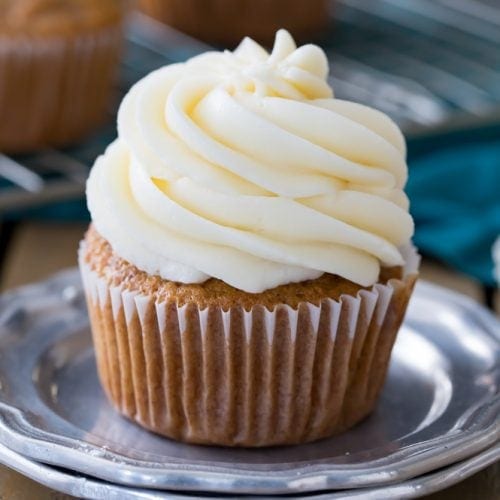
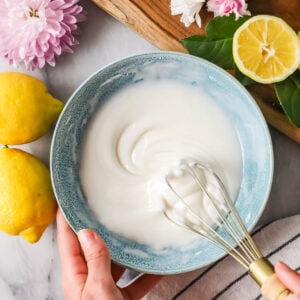

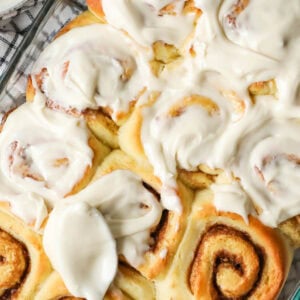
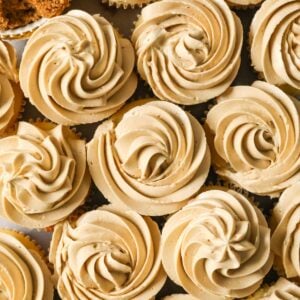
Gwen M.
Beautiful buttercream! Your tips and instructions were very helpful and thankfully, it turned out just right( my first time trying this type of frosting). By the way- Would you recommend doubling? I wasn’t sure, so just did 2 batches just in case it didn’t work. Thank you!
Sam
I’m so glad you enjoyed it so much, Gwen! You could double this recipe. 🙂
Marieve
Can I do the heating sugar+egg whites step of the process in a metal bowl and then transfer?
My mixer is a bosh and the bowl is plastic?
Sam
Hi Marieve! Honestly I think it could work, but plastic can hold on to oil and residue and could prevent the egg whites from forming the way they need to. Just something to look out for. Let me know how it goes if you try it. 🙂
JosieR
Hi, Sam–I’ve made this recipe twice before today and it’s been fine. When I made it today, it was very soupy, where I could actually pour it. I did everything the way your video shows and your recipe describes and I’m not sure what happened. I used a thermometer and made sure the meringue was cool before adding the butter and I made sure the butter was not too soft. I was able to frost my cake with it but I had to make regular American buttercream to pipe rosettes on it. Any suggestions for next time? I love ALL your recipes and videos!
Sam
I’m so sorry to hear this happened, Josie! Assuming there were no substitutions, the most likely cause is the texture of the egg whites. If they are over-mixed or not mixed enough you will lose the structure of the frosting. 🙁
JosieR
Thank you, Sam, for your reply. The only other thing I can think of that might solve the mystery of my very liquidy frosting is that a friend who had the cake today said she “loved how crunchy the frosting was.” I did not realize it was crunchy and I’m wondering if maybe I didn’t get the sugar to melt with the egg whites. I used a thermometer and it reached 175 degrees–maybe I didn’t whisk it enough when it was on the heat???
Shivon
How do you get your buttercream to look so white?
I have made this recipe a few times, so great and the instructions are so easy to follow! I wanted to make pastel pink frosting this time around but it looked more like a peach colour because of the pale yellow frosting to begin with.
Emily @ Sugar Spun Run
Hi Shivon! Sometimes the buttercream is a bit yellow from the color of the butter itself (some brands are simply more yellow than others). Also make sure you are whipping the frosting long enough, as that is a big contributing factor to how pale it gets. You can always add a tiny amount of purple gel food coloring (like the tip of a toothpick!) to counteract the yellow color. Hope that helps!
Terri
Would it be okay to use superfine sugar? I’ve read that superfine and granulated are 1:1 ratio. Would stabilization be impacted by the substitution?
Thanks and I love your recipes, explanations and videos.
Sam
Hi Terri! Superfine sugar should work just fine here. 🙂
Christina Marshall
Hello! I’ve made quite a few of your recipes and haven’t been disappointed yet. You are my go-to for recipes. I have a question… can this, and your chocolate meringue buttercream, be cut in half with no issues?
Sam
Hi Christina! As long as the ratios are kept the same you shouldn’t have any issues cutting the recipes in half. 🙂
Susan Christensen
Excellent tutorial! I appreciate the tips!
Priscilla Hill
I only got 4 1/2 cups when I made this, not 6. It also tasted like straight butter. What am I doing wrong?
Sam
Hi Priscilla! Were your egg whites whipped to the proper consistency? Did you add all of the sugar?
Priscilla Hill
I did add all the sugar, and the egg whites were still so seemed to be?
Sam
That’s very odd. I’m not sure what would have caused this in this situation. 🙁
ali
nice work.
Jyl L.
Dear Sam, I read a tip where people were saying how they made the Swiss buttercream not grainy. And this person said we found if you bake the sugar that will do it. So I baked the sugar on a tray in the toaster oven at about 225 for about 10 or 15 minutes. The sugar didn’t look or taste any different but it was a game changer. The boiling over water was done very quickly. The whipping in the standup mixer was much faster. This is definitely worth a try.
Beth Eldridge
How do I turn this into a chocolate version?
Sam
Hi Beth! I do have a chocolate swiss meringue buttercream for you. Enjoy! 🙂
L J Washington
Amazing recipe!!! I made it last night and left in fridge overnight. Seems like the flavor intensified even more. I love vanilla extract so I did add more to taste. My first time making Swiss meringue buttercream cream and it was a success on first try!
Emily @ Sugar Spun Run
We’re so happy you loved it! Thanks for using our recipe 🩷
Sara Kitchen
I am not sure what I did wrong but mine turned into soup? the bowl was cool to the touch after whipping the egg white for 10 minutes and it thickened but did not give stiff peaks. Help? It tasted awesome but I could not use it!
Emily @ Sugar Spun Run
Oh no! There are so many factors that can cause your egg whites to not whip properly. Did you use separate your own eggs or use carton egg whites? Did you whip long enough? Sometimes it can take 15+ minutes, especially on humid summer days. Also, did you make sure your bowl was clean, dry, and grease-free? Hopefully this helps you troubleshoot, but if not, let us know. We’re happy to help further!
Panther
How can you make sure water isn’t touching the bottom of the bowl?
Emily @ Sugar Spun Run
You can check by placing your bowl on top of your pot and then removing it. The bottom should be dry when you do. Hope that helps!
Tauna Merritt
Can you use different flavors in it besides vanilla?
Emily @ Sugar Spun Run
Absolutely! Enjoy 😊
Love
Idk how this recipe doesn’t have more reviews? Is it a common recipe or something? But I swear it’s my favorite
Emily @ Sugar Spun Run
We’re so happy you like it! Thanks for the review 😊